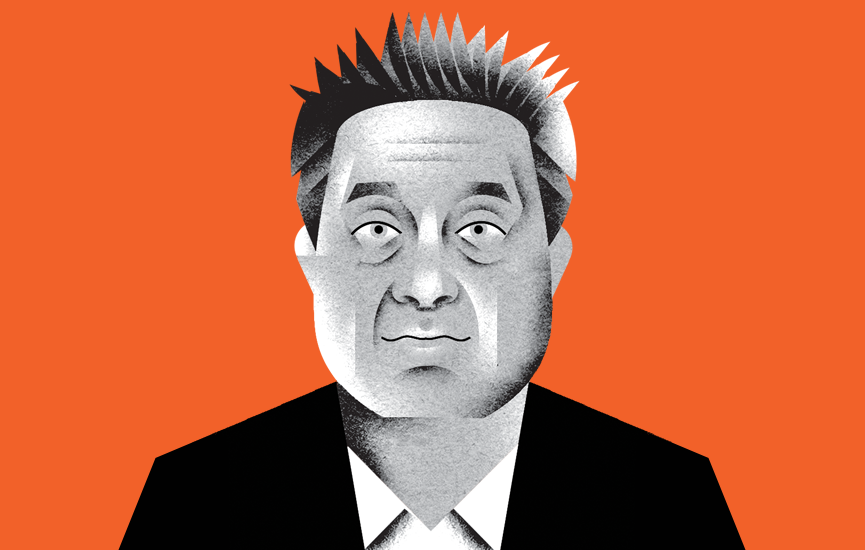Q: How did the Panama Papers leak from Panamanian law firm Mossack Fonseca come about?
A: Even though this is based on documentation of Mossack Fonseca, it was a series of stories that we’d done previously that led to it. We’d been working on the offshore world—a number of previous projects—and each collaboration was getting bigger and bigger.
The Panama Papers themselves came directly from one of our media partners on these previous projects, Süddeutsche Zeitung in Germany. Two of our ICIJ members there got contacted by a source, and over a period of time we got access to 11.5 million documents from Mossack Fonseca. These documents were basically every client sheet, every email, everything inside the firm from 1977 to the present day. It represented the biggest case of inside information into the tax haven world that anyone had ever seen before.

Actually figuring out what was newsworthy must have been a challenge.
It was a slow process. We were contacted by Süddeutsche Zeitung in early 2015, and then we began to invite media partners. We’re a nonprofit. We bring media together to work on cross-border projects. Our model is to find a really great story that is genuinely cross-border, and then pair the story itself with the resources to do the project. We’ve got 12 permanent staff, half of them are computer engineers. We love big data because big data has got lots of names from lots of people in lots of different countries, which makes it easier to approach media and get the partners on board.
The vast majority of records from Mossack Fonseca, though, were for law-abiding people of little or no interest to the public. What was your approach to them?
We needed to prove public interest on this because clearly this was information that Mossack Fonseca didn’t want made public. The source approached Süddeutsche Zeitung—so then the other issue for us was we didn’t know the source. So we focused largely on public figures and people who were elected officials. We found 12 current and former world leaders; we found about 140 politicians from around the world. We really deliberately focused on that and things of genuine public interest: the trade in blood diamonds, how offshore companies have been used to trade art, how offshore companies were being used [with the] image rights of sportspeople and thereby likely avoiding taxes.
A lot of what we were seeing was perfectly legitimate. It’s not illegal by itself to have an offshore company, so we had to prove public interest, and we deliberately set out not to go after people or to write stories about people who weren’t of genuine public interest.

So what did you uncover?
We were looking at a lot of crimes. It emerged when we questioned Mossack Fonseca that they didn’t know who their end clients were. They didn’t know who the final owners of the companies were, nor did they ask. All of that was of massive public interest because you’d always been told that this was a well-regulated system when it clearly was not.
Then there were a lot of figures like Assad in Syria, and we were able to get access to them. Then we went outside the data to publicly available information [such as] the OFAC list, which is the list of companies that have been banned by the U.S. and other agencies around the world. We ran all those lists of companies through the data and found may of them were in there. We’re talking about fronts for the North Korean regime and other world regimes that were in there, and lot of people that have been sanctioned by the U.S.
Especially with public officials, the fact that they were keeping their offshore holdings secret often had direct implications for those countries. The most dramatic example was Iceland. The prime minister had to resign. He didn’t even do anything illegal, it’s very important to point that out. Where he went wrong was that he didn’t disclose the company, and then there was potential conflict of interest in that this offshore entity, registered in the British Virgin Isles, actually held bonds in Icelandic banks. When he set up the company with his wife, he wasn’t even a politician, but two years later when he became a politician, he didn’t declare it. Nor did he declare that he was actually a creditor in the collapse of the banks when he was elected to sort out the financial mess. You can see the potential conflict.
The story goes beyond just the people who were in the papers, though.
What we were seeing in the Panama Papers were secrets, and secrets are always interesting. These were details that were never meant to see the light of day. Because there was so much detail in there and because their records were so complete, we were effectively looking at the day-to-day workings of the offshore world in a way that no [one] had ever seen before…Mossack Fonseca in some cases didn’t even know who their end clients were. As far as they were concerned, their clients were the big banks and the accountancy firms that dominated the data. It was the banks that were mostly using it on a day-to-day basis, which again, gave an insight into that world.
How was the ICIJ’s approach different from what WikiLeaks does?
We were very careful how we released the information. We were criticized by WikiLeaks for not just hocus-pocus putting the whole lot on the internet. We applied journalistic ethics and methodology to the data. We went outside the data. People think you get a week and you sit there and you write a story. That’s not what we do. We were putting context around the documents to make sure that what we were publishing was in the public interest.
Are leaks of this scale going to become more common, whether it’s to journalists like the ICIJ or rogue groups like WikiLeaks?
We are in the era of big data leaks. You look at the trend over the last 10 years, since the first WikiLeaks [leak] in 2006 [then the Chelsea Manning leak in 2010], and the leaks have been getting bigger and bigger. We’ve been subject to a number of them. But you look at Snowden, you look at WikiLeaks, you look at the ICIJ work—it is increasingly possible for people to copy data on a scale not at all possible before. That’s a new era for journalism, but it’s also a new era for the financial industry.







